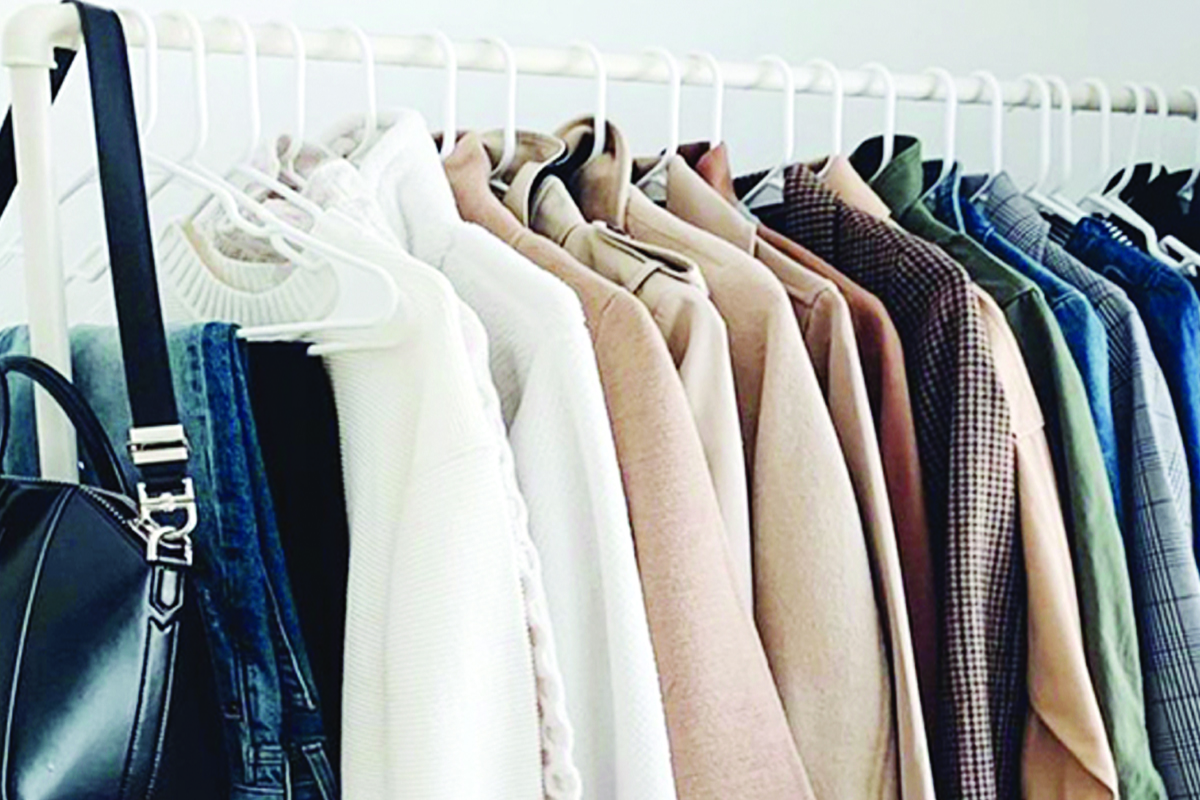For most of us, shuffling through the closet in the morning, trying to figure out ‘what to wear today?’ is constant. It would be unrealistic to think that one could stay away from the appeal of changing trends. A pièce de résistance in your wardrobe can help accentuate your persona for that special event and impart a sense of newness. However, fast fashion, ever-changing trends and commodious online retail can sometimes turn our wardrobes into chaotic disaster zones, overcrowded with clothes that one might have purchased on a whim but seldom wear.
Today, with people on the qui vive for sustainable and responsible fashion, which is the solution to the negative environmental impact imparted by fast fashion, capsule wardrobes have again made a revival. The term was first used by Susie Fox, London’s Wardrobe boutique owner, in the 1970s to describe a collection of classic core wearable items that could be easily interchanged and would never go out of style. However, it was in 1985 that this term became a part of mainstream lingo with Donna Karan’s capsule collection “Seven Easy Pieces”, which showcased a dress, bodysuit, skirt, white shirt, cashmere sweater, tailored jacket, and leather jacket, championing the concept of an easy transition from workwear to evening or party wear.
How do we decode capsule wardrobes, then? A capsule wardrobe is a collective and thoughtfully curated, edited item of sartorial clothing that can be easily interchanged with one another, ensuring that nothing goes unused or thrown at the back of the wardrobe. Rather than going for an overflowing wardrobe with 70 to 80 pieces, invest in classic 20 to 25 pieces that complement one another well and go well with your silhouette, desired colour palette, aesthetics and lifestyle.
“A major reason behind the comeback of the capsule wardrobe is how people are now embracing the minimalist lifestyle and becoming conscious of the environmental impact due to fast fashion. Fast fashion is basically the production of garments on a huge scale that is introduced continuously to meet the ever-changing trend. This has been causing a major problem in the current fashion scenario, generating a lot of textile waste,” says Disha Anushruta, a final-year textile design student at the National Institute of Fashion Technology, Mumbai.
A capsule wardrobe helps you escape the decision fatigue that comes with the regular grind of figuring out what to wear depending on the time of the day. “Doing a 9-to-5 corporate job, I never find the energy and time to figure out what to wear every day. At first, this concept of a capsule wardrobe felt a bit restrictive, but after decluttering my wardrobe, deciding what to wear has become so much easier,” says Aheli Roy, a banker residing in Mumbai.
How do you curate this closely-knit list of edited items? First off, decluttering your wardrobe does not mean getting rid of every single piece of clothing that you’ve ever owned. Curating your own personalised capsule wardrobe is about figuring out the items that you wear often, focusing on colours and patterns that can universally complement everything, and identifying items that you are missing.
In India, fashion celebrates the classic combination of the west and east. Apart from adding a few neutral-coloured shirts, denim of different washes, neutral shades of formal pants, and some classic t-shirts, add your favourite ethnic essentials to the mix. Choose bottoms like tailored trousers and basic neutral-coloured leggings that pair well with your ethnic wear, like kurtas and tops, so that you can dress up or down depending on different occasions. Men should invest in two or three suits that can be paired with T-shirts, formal shirts and ties to cater to different events. “Your capsule wardrobe should contain items that fit you well, are comfortable, and are versatile because these items would be the core pieces in your closet. Rather than going for something trendy that you will wear once, go for pieces that are timeless, like classic cuts and silhouettes,” adds Disha.











